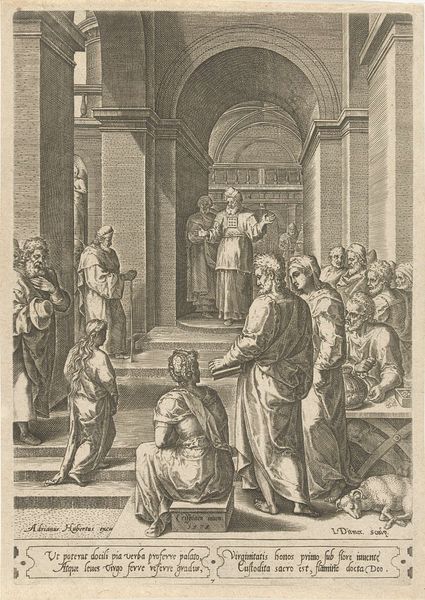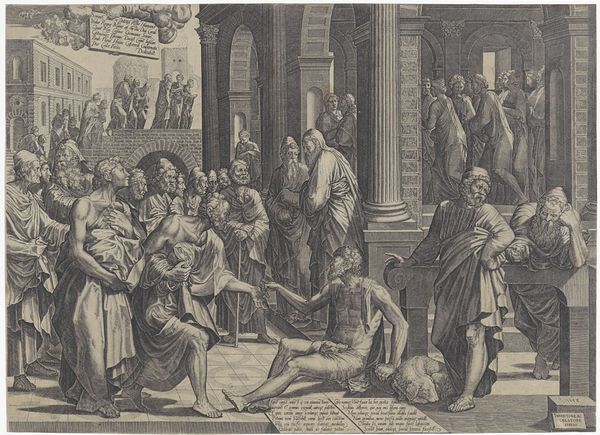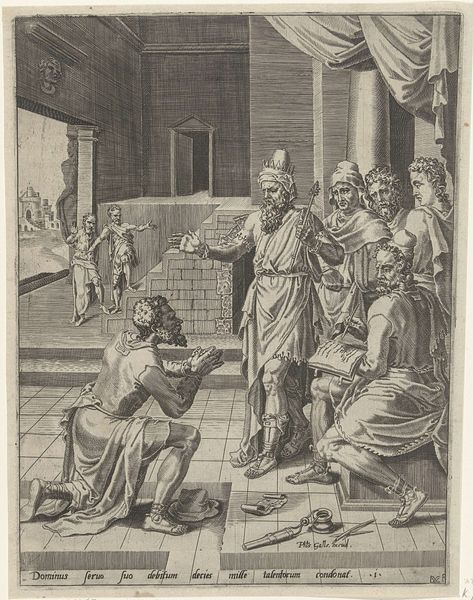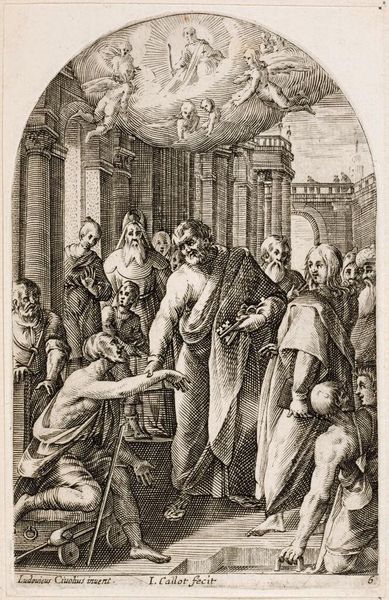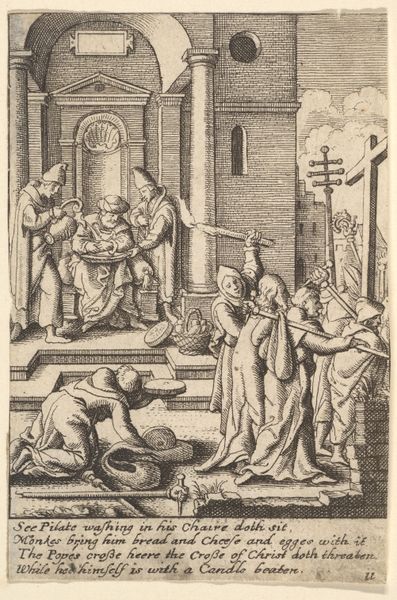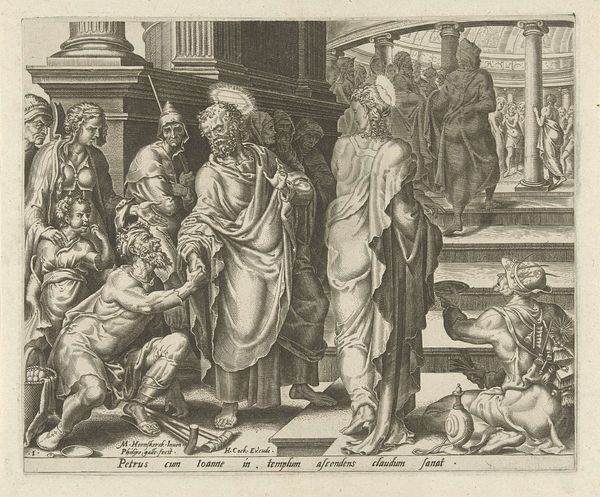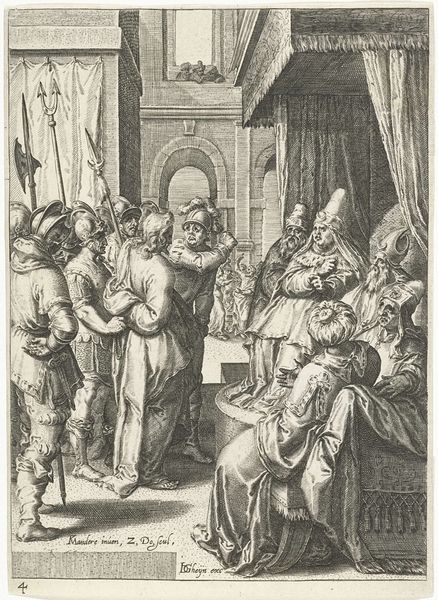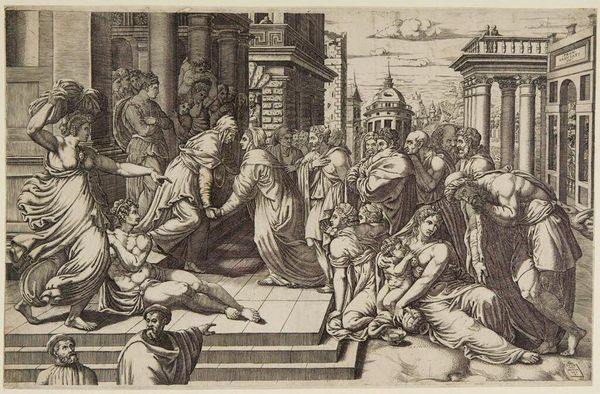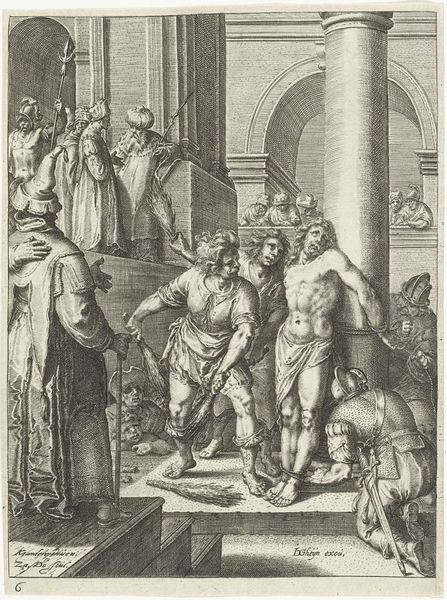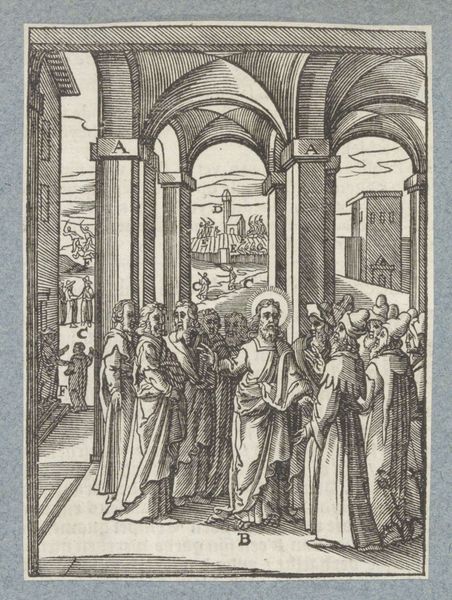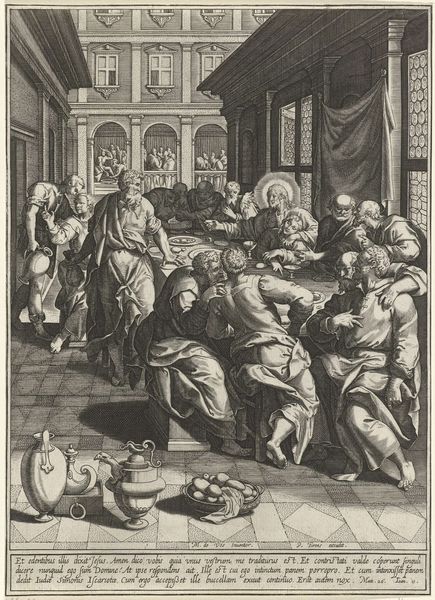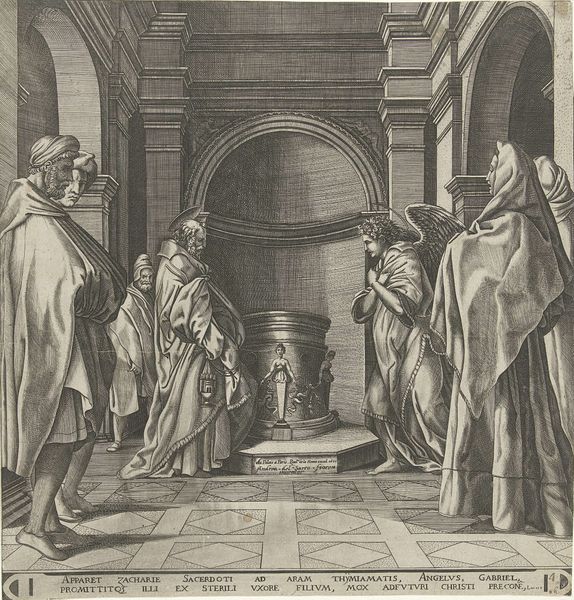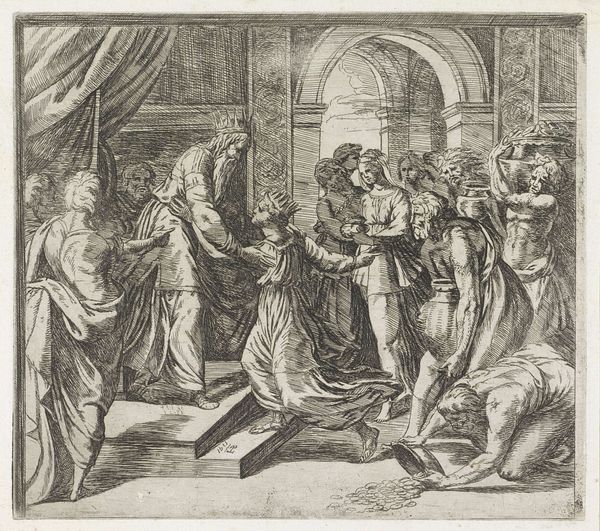
print, engraving
#
light pencil work
#
narrative-art
#
mechanical pen drawing
# print
#
pen sketch
#
pencil sketch
#
sketch book
#
figuration
#
11_renaissance
#
personal sketchbook
#
pen-ink sketch
#
line
#
pen work
#
sketchbook drawing
#
history-painting
#
northern-renaissance
#
engraving
#
pencil art
Dimensions: height 264 mm, width 280 mm
Copyright: Rijks Museum: Open Domain
Curator: Immediately, I'm drawn to the texture—it seems almost tactile despite being a print. There's an incredible depth of field considering the limited palette. Editor: Today, we are looking at “Christus en vrouw van Kanaän,” or Christ and the Woman of Canaan by Balthazar van den Bos, created in 1553. It's housed right here at the Rijksmuseum, a jewel of the Northern Renaissance, meticulously rendered as an engraving. Curator: The kneeling woman—it’s a powerful depiction of supplication, but also of resilience. Think of the inherent social power dynamics at play in this encounter. The Gospel narrative is fraught with potential readings on gender and faith. What does it mean to depict the woman in this state? Editor: Indeed. The lines are incredibly precise, a testament to the engraver's skill. Look at the clothing—the folds are deeply rendered, suggesting a knowledge and appreciation of the cloth itself. Was it linen, or perhaps wool? Consider too the availability of such prints—who were its intended audience, and how was the artform being consumed? Curator: The architecture, too, positions Christ within a specific visual vocabulary – classical and yet monumental. What message was intended for the communities engaging with these depictions? Were the structures of authority, faith and Empire presented to endorse their legitimacy? Editor: It’s a print, meant to be disseminated, reproduced, shared... labor was undoubtedly part of the creation process; the preparation of the plates, the paper used. How does this accessibility shape the narrative, compared to, say, a commissioned painting in a private collection? Curator: It certainly democratized religious narratives in a way previously unseen, allowing interpretations across societal strata. This print allows for, perhaps even demands, questioning of religious hierarchies. Editor: Considering its production and accessibility helps us to dismantle this almost sacred aura. It shifts the focus from the individual genius of Van den Bos to a larger network of artistic and commercial exchange. Curator: So, beyond its immediate religious context, it acts as a visual echo, posing fundamental questions about power, agency, and who gets to shape the narratives we inherit. Editor: Indeed. I walk away appreciating not just the artistic merit, but the material culture it represents. It is a physical object with the ability to open doors and ask what were the conditions that brought it here?
Comments
No comments
Be the first to comment and join the conversation on the ultimate creative platform.
